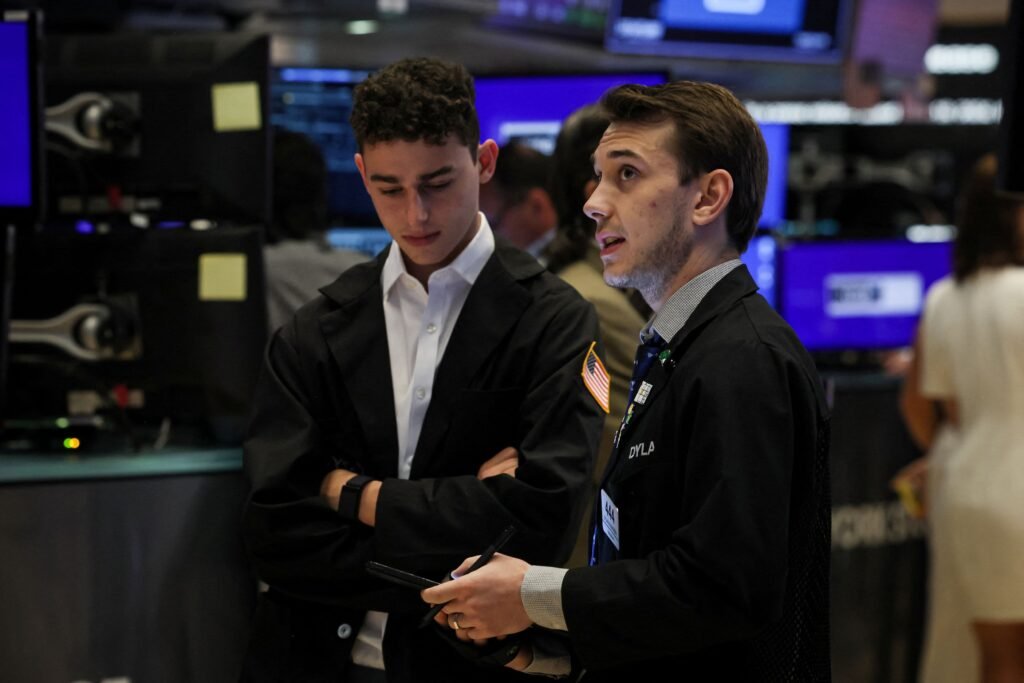Traders work on the floor of the New York Stock Exchange (NYSE) in New York City, USA, June 24, 2024.
Brendan McDiarmid | Reuters
Wall Street saw a dramatic shift in market dynamics on Thursday, with winners and losers swapping places in a single day — and that may be just what is needed to keep stocks rallying.
The Russell 2000 small-cap index, which has struggled to find its footing all year, rose more than 3% on Thursday. At the same time, the so-called “Magnificent Seven” stocks all fell, including Nvidia’s more than 5% drop and Apple’s 2.3% drop, dragging down both the S&P 500 and Nasdaq Composite indexes.
Bespoke Investment Group shared two statistics on social media site X to show just how rare such a split is.
- Thursday marked the second day since 1979 that the Russell 2000 rose more than 3% while the S&P 500 fell.
- The Nasdaq Composite Index is trailing the Russell 2000 Index by more than 5 percentage points, which is believed to be its largest one-day difference on record. The only other time the gap was larger than 5 percentage points was in November 2020, shortly after Pfizer announced positive results from its COVID-19 vaccine trial.
While major market averages and many individual 401(k) accounts may fall in a single day, this strange sequence of results could be a positive sign for the market. Much of the recent rally has been driven by big technology companies, leaving investment pros worried about a small number of companies that are leading the stock market.
“Today is an important day,” Ed Yardeni of Yardeni Research said on CNBC’s “Closing Bell.” “This is the day investors start moving money out of the Magnificent 7 and into the rest of the market. I don’t think this is going to keep the S&P 500 down. I think there’s enough money to keep the big performers higher, but I think we’re going to see more gains in the S&P 493 and in the small and mid-caps,” he added.
The split trade came after the release of June consumer price index data early Thursday showed headline inflation fell last month and is now up about 3% over the past year. That strengthened confidence that the Federal Reserve will start cutting interest rates as early as September. Federal Reserve Chairman Jerome Powell said in congressional testimony this week that the central bank knows keeping interest rates high for too long could hurt the economy.
“Investors are rotating. They’re moving from large tech stocks to small and mid-cap stocks to real estate stocks,” Sam Stovall, chief investment strategist at CFRA Research, told CNBC. “Investors have been waiting for confirmation that the Fed is likely to start cutting rates and that it’s not in response to a recession. It may not be a guarantee, but it certainly will be.”
Moves in the bond market support this notion: Treasury yields fell across the board on Thursday, meaning Treasury prices are rising.
“We’ve had a somewhat dovish Chairman Powell that has pushed the CPI to positive,” Ross Mayfield, investment strategy analyst at Baird, told CNBC. “Interest rates have come down a lot and we’ve seen a kind of rotation trade. But the problem with the market being so concentrated in big tech companies is that the rotation trade can look negative on the surface, and I think we’re seeing some of that today.”
To be sure, there have been signs that the U.S. economy has weakened in recent months. Slower growth and a recessionary environment would be tough on small-cap stocks, which tend to be more cyclical and domestically-oriented than their larger counterparts.
—CNBC’s Sarah Min and Alex Harring contributed reporting

